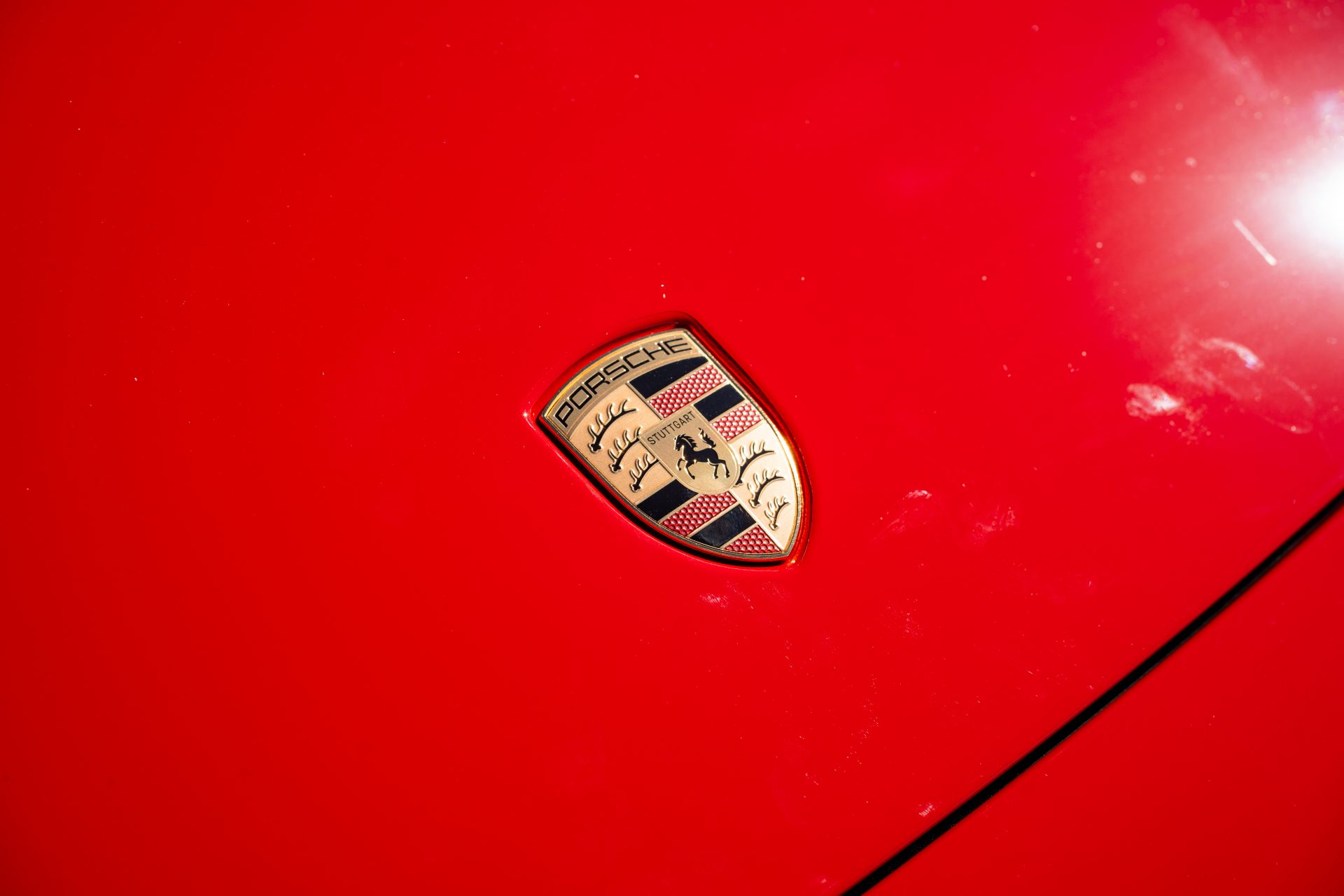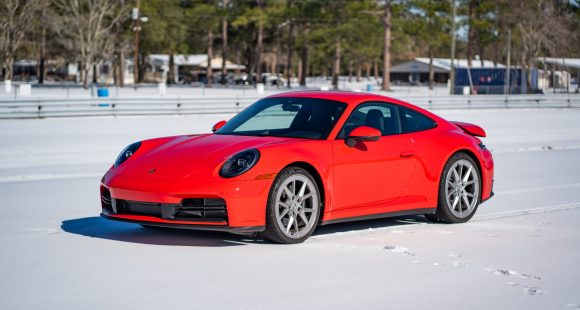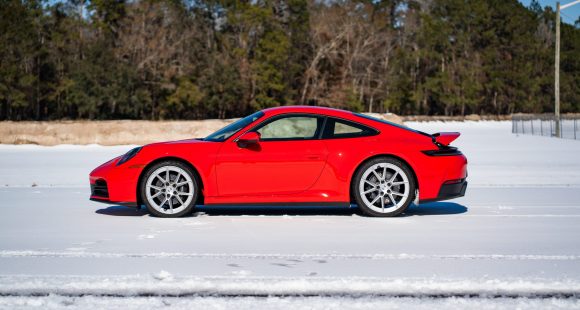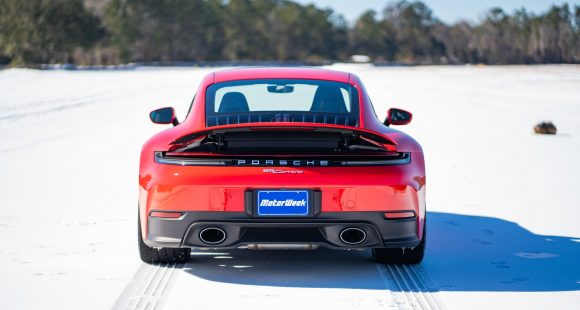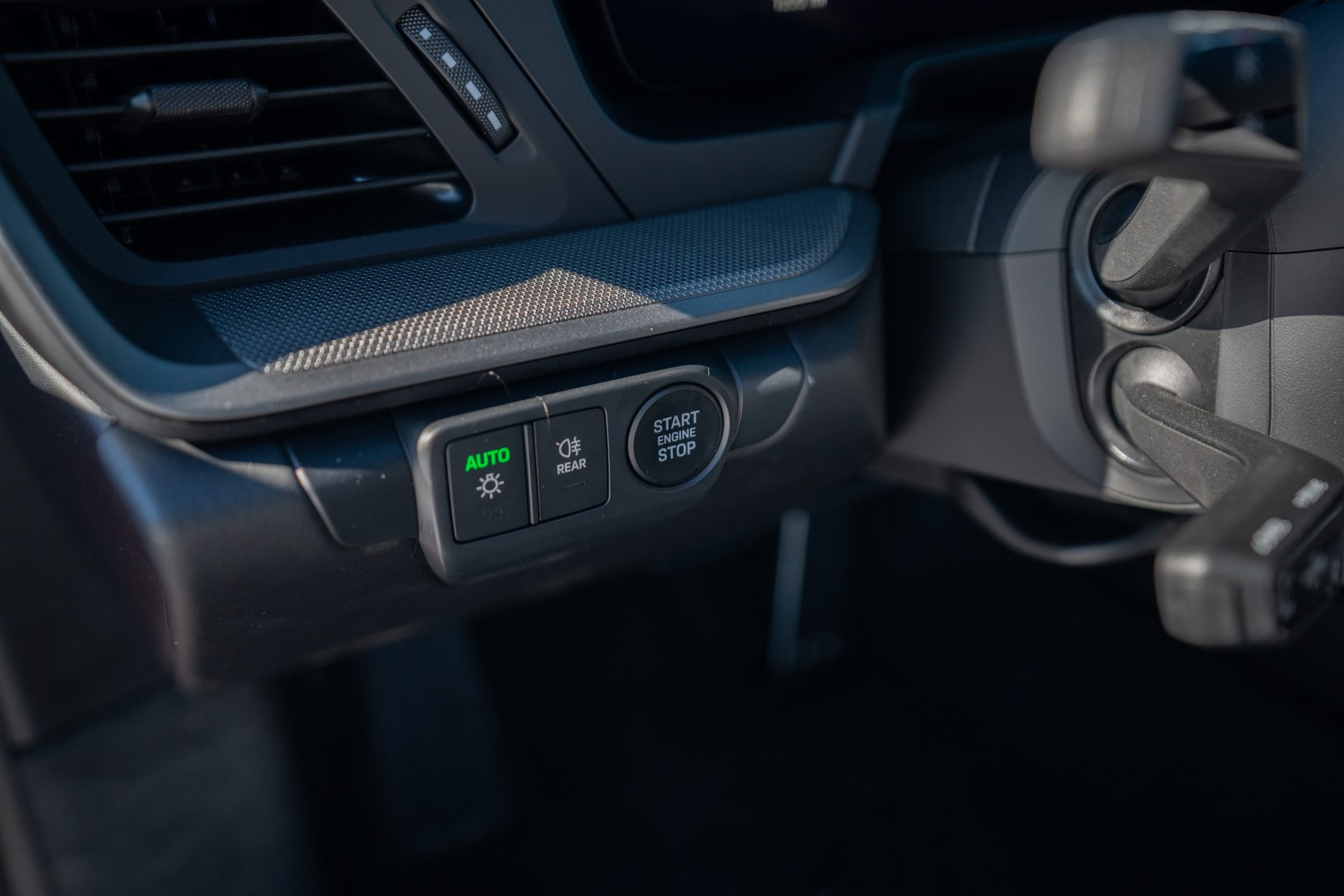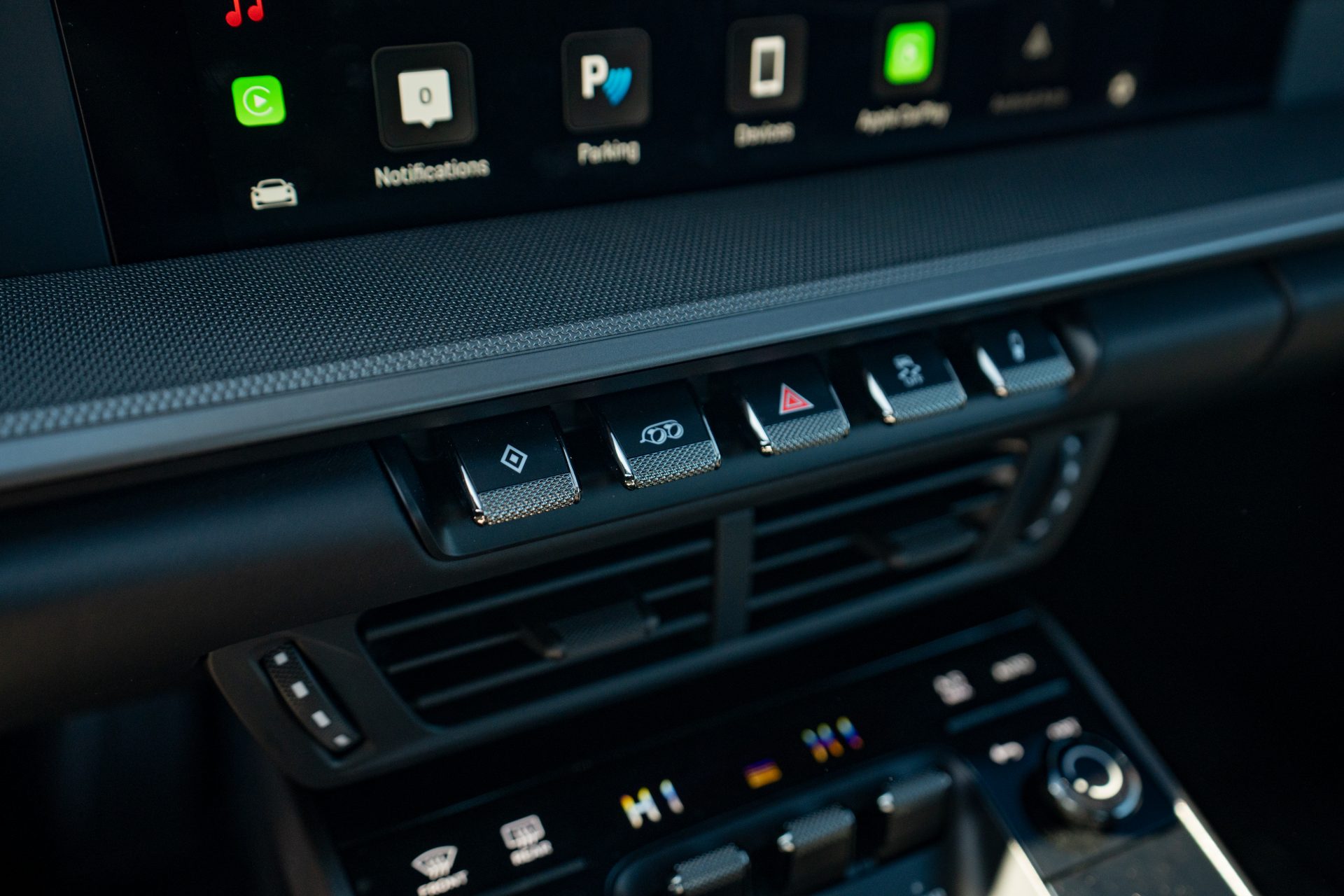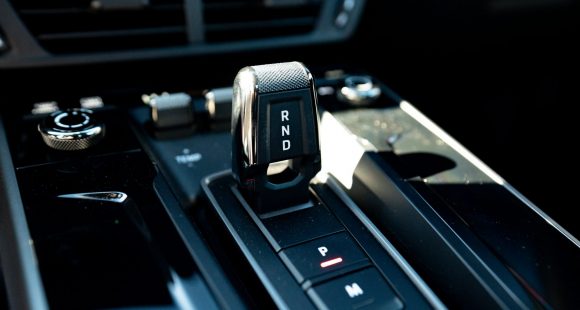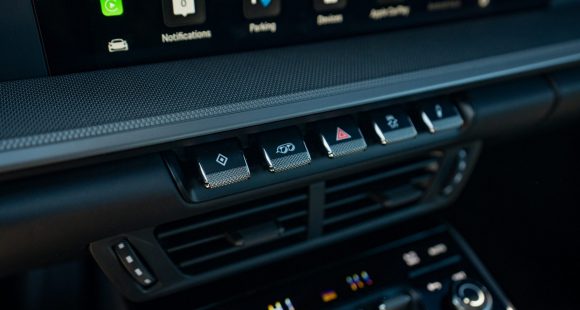2017 Toyota Highlander
Few brands have the SUV landscape covered as totally as Toyota. Even when it comes to large family duty, they have a trio to choose from. But it’s the Highlander crossover that picks up the bulk of that business, and its been updated for 2017 to give those families more of what they really want.
Now midway through its 3rd generation, the Toyota Highlander adds a multitude of updates for 2017. But don’t think they’re the hastily assembled kind of revisions in response to some sales slump, rather just the normal progression of keeping current with the segment. As despite a rash of recently re-engineered competition, the Highlander remains a top seller in the family 3-row utility world.
You don’t have to like the big mouth look, in fact most of our staff don’t; but you certainly won’t be able to ignore it, as it seems to be swallowing up as much road as possible while heading in your direction.
The big news for ’17 is new SE trim. It tames that front end somewhat with dark pieces replacing the usual chrome. 19-inch wheels are added as well, to support a sportier image.
 Fortunately, it doesn’t stop with looks. SEs also get a retuned suspension for a little more agility. Still, this is perhaps where Highlander shows its age the most, having a heavier feel compared to much of the competition who have moved on to lighter weight materials. But that also gives it a totally solid, safe, and secure feeling compared to many rivals.
Fortunately, it doesn’t stop with looks. SEs also get a retuned suspension for a little more agility. Still, this is perhaps where Highlander shows its age the most, having a heavier feel compared to much of the competition who have moved on to lighter weight materials. But that also gives it a totally solid, safe, and secure feeling compared to many rivals.
From the high seating position, drivers will be enjoying that enhanced nimbleness from new black leather seats with silver stitching. Of course its accompanied by dark dash and door trim.
Controls and layout are all very familiar, with no major changes here; including the very helpful storage in the dash. Good news for those with electronics to keep charged, all Highlanders now come with 5 USB ports!
Both 7 and 8-passenger versions are available, with the 2nd row seats remaining very comfortable and spacious. And while many competitors have stepped their game up in the 3rd row department, access here is still very good, though very low seat bottoms make for an awkward seating position.
 Cargo space continues to be good here; 13.8 cubic-ft. behind the 3rd row, 42.3 behind the 2nd, and a max of 83.7 cubic-ft. Boosting practicality further, the Highlander is one of the few SUVs that still has a flip up glass for the rear hatch; though only in upper trim levels.
Cargo space continues to be good here; 13.8 cubic-ft. behind the 3rd row, 42.3 behind the 2nd, and a max of 83.7 cubic-ft. Boosting practicality further, the Highlander is one of the few SUVs that still has a flip up glass for the rear hatch; though only in upper trim levels.
Even better news, is the arrival of a higher power. An enhanced version of the 3.5-liter V6 that gets a 25-horsepower boost to 295. Torque rises 15 lb-ft. to 263.
All this while actually improving fuel economy, thanks to a new 8-speed automatic transmission.
Government Ratings are now 20-City, 26-Highway, and 22-Combined with all-wheel-drive. Our average was 21.0 miles-per-gallon of Regular.
At the track, thanks to the upgraded V6, Highlander certainly feels less sluggish off the line. There’s a strong low end pull to get you going, while it eagerly delivers power on the high end as well. We hit 60 in 7.7-seconds; with a ¼-mile time of 16.0-seconds flat at 92 miles-per-hour.
 Base LE trim still comes with a 185-horsepower 2.7-liter I4, though in front wheel-drive only; and of course the Highlander Hybrid remains available as well.
Base LE trim still comes with a 185-horsepower 2.7-liter I4, though in front wheel-drive only; and of course the Highlander Hybrid remains available as well.
As for how the upgraded SE suspension handled our cones; well, there is still some mild understeer as you might expect, but the tauter suspension is very noticeable.
In fact, after a few runs, we were really hauling the goods, shaving ever closer to the cones and keeping speeds higher than we would have expected going in. Even body roll is well subdued; it was tire sidewall flexing that seemed to hold us back the most.
Of course it’s all about family safety these days; and for 2017, all Highlanders get Toyota Safety Sense P with automatic emergency braking as standard equipment.
Highlander pricing starts at just $31,625. New SE trim goes for $40,685, with all-wheel-drive adding another $1,460.
Even with the rapid pace of change these days, the Toyota Highlander has had no problem staying near the top the sales charts in the highly competitive 3-row crossover utility segment. Toyota fans will find more of what they love here in this upgraded 2017 version. And that should ensure current Highlander sales remain high, until an all-new one hits the streets.
Specifications
- Engine: 3.5 liter
- Horsepower: 295
- Torque: 263 lb-ft.
- 0-60 mph: 7.7 seconds
- 1/4 mile: 16.0 seconds @ 92 mph
- EPA: 20 mpg city / 26 mpg highway
2025 Porsche 911 Carrera
Ever Evolving 911 Reaches New Heights
The Porsche 911 has existed for 60 years now! Amazing! And, you could argue that major changes over all those years have been relatively few, as constant incremental improvement is more the way that Porsche does business. With that in mind, let’s hit the track in the latest 911 and see what constant improvement means for 2025.
We’ve driven so many 911s here at MotorWeek, each seemingly more special than the last, so it’s a bit refreshing to be ripping around Savannah’s Roebling Road Raceway in a 2025 Porsche 911 that’s about as close as you can get to base these days. And the fact that it’s just as fun as all those exclusive pieces says a lot about how far the 911 has come. Perhaps it also speaks to how much a base 911 will set you back today as well; more on that later.
For now, we’re just thinking about the next apex, holding steady throttle as we approach, and getting on it way sooner than you’d expect without upsetting anything, as the 911 rockets off the corner thanks to tremendous grip and a PDK trans that finds the perfect gear before we even gave it a thought. Even with very cold track temps, we never struggled for grip or battled any wheelspin coming off of corners. And trying to land it in that perfect spot in braking zones is easy with strong brake performance that was predictable and consistent lap after lap; no wandering, and great feedback too.
Yes, even the standard 911 is near pure perfection on a racetrack. It gives you all the right feedback, stays incredibly flat through corners, makes you always feel totally in control, and again is just plain fun. Unless you’re chasing lap times, there’s really no need to head further up the 911 tree. Though it is worth noting the few upgrades that were on our Carrera did help the situation a little. The 20- and 21-inch Carrera S wheels enabled plenty of grip from the 305 Pirelli P Zero tires, the Sport Chrono Package allows 0-60 sprints of 3.7 seconds, an extended range fuel tank meant we could lap all day without having to fill up, and the fantastic Sport Seats provided great support and better comfort than we remember experiencing in a 911. The Sport Exhaust system didn’t add anything to performance, but made things sound a whole lot better, and the oval silver tips look great too.
We never struggled for grip or battled any wheel spin coming off of corners.
Our track time got cut short thanks to a rare snowstorm in Coastal Georgia, but the white stuff and blue sky made the perfect backdrop for our Guards Red Carrera. Exterior tweaks for what is officially the 992.2 include a reshaped front fascia with improved aerodynamics. All front lighting is now contained within the Matrix Design LED headlight housing. The rear fascia has also been smoothed out, the license plate moved higher, and Porsche 3D block lettering spelled out across the back beneath the active rear spoiler and new decklid grille.
Even without Turbo in the name, the standard 911 engine is indeed a turbo these days, a 3.0-liter flat-six twin-turbo delivering 388 horsepower and 331 lb-ft strictly to the rear wheels in the Carrera Coupe.
Inside the cabin, the 911 continues its slow crawl towards the modern, now including a 12.6-inch fully digital gauge display and a start button located on the left side of the steering wheel, with drive modes easily accessible on the wheel itself. In another no brainer move, Porsche now makes the rear seat a no cost option, so you can choose if you want it or not.
Government Fuel Economy Ratings are 18 City, 25 Highway, and 21 Combined. That’s only slightly worse than average for the Energy Impact Score; 14.2 barrels of annual oil consumption with 7.0 tons of CO2 emissions.
The good news is this 911 had the fewest number of options of any Porsche that we’ve tested in some time, and it was still plenty awesome; the bad news is, a base Porsche 911 Carrera Coupe now starts at $122,095.
But can you really put value on “the force,” this mythical power that Porsche seems to have, that somehow turns average drivers into great ones? It’s useless to resist as far as we’re concerned, as it only gets better with the 2025 Porsche 911 Carrera.
Specifications
As Tested
- Engine: 3.0-liter twin-turbo flat-6
- Transmission: 8-speed PDK
- Horsepower: 388
- Torque: 331 lb-ft











